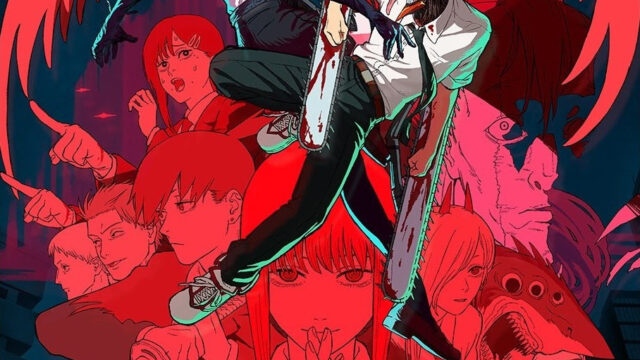English Dub Season Review: Jellyfish Can’t Swim in the Night Season One
Mahiru Kouzuki, a talented artist and high schooler, gave up on her passion for painting after her classmates mocked a vibrant jellyfish mural she created in elementary school. Years later, she meets Kano Yamanouchi, a former idol struggling with a troubled past, who unexpectedly admires her work. Inspired by Kano’s encouragement, Mahiru decides to reignite her childhood dreams. She joins Kano’s new music project, JELEE, taking on the role of mascot designer while enlisting the help of her childhood friend, Kiui Watase, a professional streamer, and Kim Anouk Mei Takanashi, a pianist and avid fan of Kano’s idol career. Together, these four girls form JELEE, an anonymous music and animation group with aspirations of becoming a global phenomenon. However, their journey to success requires them to confront the emotional scars of their pasts and rediscover their creative identities.
On the technical side, this series was Produced by Doga Kobo, and directed by Ryōhei Takeshita, with series composition by Yūki Yaku, original character designs by popman3580, and designs adapted for animation by Junichirō Taniguchi. The opening theme is “Color”, which was performed by KanoeRana, while the ending theme is “25 Hours in a Day”), which was performed by Anna Tsurushima.
Despite the out-of-context name, Jellyfish Can’t Swim at Night is a deeply heartfelt original anime, produced by Doga Kobo in celebration of its 50th anniversary. The story revolves around four unique young women who come together to form JELEE, a music and animation group along the lines of bands like “Gorillaz” or “Prozzak” who regularly use Animated Avatars for their appearances. Through their journey, the show delves into universal themes of isolation, artistic insecurity, friendship, reinvention, and self-discovery. It also explores the unflinching societal pressures, from female discomfort in public spaces to the unattainable ideals of idol culture, all while weaving in subtle, yet meaningful hints of young lgbtq undertones. This blend of introspection and companionship forms the core of an anime that is as emotionally resonant as it is engaging.
The narrative shines as it balances personal growth with group dynamics, presenting each member of JELEE with her motivations and challenges. From grappling with past failures to rediscovering their lost creative passions, the girls’ arcs intertwine seamlessly with the group’s overarching goal of creating meaningful art. The story also ventures into the broader impact of social media and online personas, effectively capturing the realities of modern content creation. Though not revolutionary in its plot, the series breathes fresh life into a well-worn formula, skillfully navigating the relationships and personal struggles of its characters as they evolve from strangers to a close-knit family.
One of the anime’s greatest strengths is its ability to depict realistic, complex characters who grapple with issues like depression, identity, and societal expectations. Their struggles and growth feel authentic, making their victories all the more rewarding with episodes 6 and 11 easily being the emotional standouts for me for different reasons.
The animation studio Doga Kobo, renowned for its polished productions, delivers some colorful eye candy. The character designs are both vibrant and natural, while still embracing a colorful aesthetic. The animation quality is consistently stunning, complementing the dynamic energy of the music performances. Speaking of music, the soundtrack also excels, as it seamlessly blends into the narrative and captures the emotional highs and lows of the characters’ journey for better or worse…
Overall, this anime excels at being memorable and ambitious in terms of exploring the intricate layers/aspects of artistic passion, personal growth, and human connection. With its striking visuals, captivating music, and well-crafted characters, the finale left more to be desired. But if you are capable of looking past its flaws, the show remains a compelling underdog story that reminds its viewers that creating art is not just about how many streaming views you get, or the money you make when producing a product, but about the personal journey of discovering who you are, and the people you meet who inspire you and stick with you along the way.
























"There are also other characters that come and go (also owned by the Warner Bros. Discovery conglomerate media company)."
Huh. Is that just referring to other characters from the show itself, or is this implying that the new season is going to have cameos from other WBD IPs